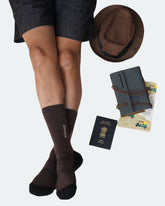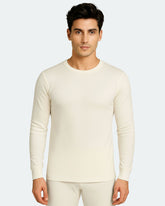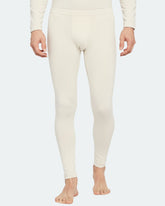Global Gala: The Top 12 Winter Festivals Around the World in 2024
Winter festivals mark the transition from fall to winter or the winter solstice, symbolizing the turning point when days begin to lengthen. They celebrate the natural cycle of seasons and the perseverance of life through the cold months. They involve the use of light, such as candles, bonfires, or decorative lighting. This represents the desire to dispel darkness and bring warmth and hope into the winter months.
Winter festivals often have deep cultural and historical roots, reflecting the customs, rituals, and heritage of a particular community or region. They provide an opportunity to preserve and showcase these traditions. These festivals create a joyful and festive atmosphere, often featuring music, dance, parades, and special performances. This adds a sense of excitement and entertainment to the season.
Many winter festivals emphasize the importance of giving to others, especially to those in need. Acts of charity and kindness are encouraged during these times, promoting goodwill and compassion.
In general, winter festivals serve as a way to bring people together, celebrate the changing seasons, and find meaning and joy during the coldest and darkest months of the year. They are a reflection of the cultural diversity and richness of human traditions across the globe.
These are the Top 12 Winter Festivals that are celebrated all around the world.

St. Paul Winter Carnival (Minnesota, USA)
The St. Paul Winter Carnival is an annual winter festival held in St. Paul, Minnesota, USA. It is one of the oldest and most renowned winter festivals in the United States, with a history dating back to 1886. The festival typically takes place during the last week of January and runs for about two weeks, depending on the year.
- Historical Significance: The St. Paul Winter Carnival was initially established as a response to a New York Times reporter's comment that referred to St. Paul as "another Siberia, unfit for human habitation" during the winter. The residents of St. Paul took this as a challenge and created the Winter Carnival to showcase their city's ability to thrive during the winter months.
- Ice Palaces: One of the most iconic features of the Winter Carnival is the construction of elaborate ice palaces. These magnificent structures, often featuring intricate designs and colorful lighting, are made from ice blocks harvested from nearby lakes. The ice palace serves as the centerpiece of the festival and is a symbol of the city's resilience in the face of winter.
- Cultural Events: Cultural events, such as live music performances, art exhibitions, and cultural showcases, are an integral part of the festival. These events celebrate the rich cultural diversity of the St. Paul community.
- Winter Carnival Royalty: The Winter Carnival crowns a royal court, including King Boreas and the Queen of Snows, as well as other characters like Klondike Kate and Prime Minister. These royal figures play important roles in festival activities and parades.
- Medallion Hunt: The Winter Carnival features a popular treasure hunt known as the "Medallion Hunt." A small medallion is hidden somewhere in the city, and participants must solve daily clues to find it. The winner receives a cash prize.
The St. Paul Winter Carnival continues to be a beloved tradition in the Twin Cities metropolitan area and beyond. It not only celebrates the beauty of winter but also showcases the enduring spirit of the community in the face of Minnesota's cold and snowy climate.
Chinese New Year (Various Countries)
Chinese New Year, also known as the Spring Festival or Lunar New Year, is one of the most important and widely celebrated festivals in many countries with significant Chinese populations and cultural influences.
It follows the lunar calendar and typically falls between late January and mid-February. While the specific customs and traditions may vary among countries and regions, there are common elements that unite the celebration of Chinese New Year across the world.
- China: Chinese New Year originated in China, and it is the most significant and extensive celebration in the country. The holiday typically involves weeks of preparation, including thorough cleaning of homes, family reunions, feasting on traditional dishes, and the giving of red envelopes (hongbao) containing money for good luck. Fireworks and dragon dances are common features of the festivities.
- Symbolic Animal: Each year in the Chinese zodiac cycle is associated with an animal sign. There are 12 animals in total. The year is named after one of these animals, and each animal is believed to influence the characteristics of people born in that year. The cycle repeats every 12 years. For example, 2022 is the Year of the Tiger.
- Fireworks and Firecrackers: Fireworks and firecrackers are set off to drive away evil spirits and welcome the new year with a bang. The noise and bright lights are believed to scare away any lingering bad luck.
- Lion and Dragon Dances: Colorful lion and dragon dances are performed in the streets, accompanied by drumming and cymbals. These dances are believed to bring good luck and prosperity to the community and businesses.
- New Year's Eve Reunion Dinner: The New Year's Eve dinner, known as "reunion dinner" or "tuan nian fan," is the most important meal of the year. Families come together to enjoy a feast of traditional dishes, including dumplings, fish, and various symbolic foods.
- Lantern Festival: The 15th day of the lunar new year marks the Lantern Festival, which concludes the Chinese New Year celebrations. People light and display colorful lanterns, solve lantern riddles, and enjoy sweet glutinous rice balls called "tangyuan."
Chinese New Year is a time for reflection, renewal, and strengthening family bonds. It is a joyous and festive occasion that blends cultural traditions, superstitions, and symbolism, all to usher in good luck and prosperity for the year ahead.
Carnival of Venice (Italy)
The Carnival of Venice, known as "Carnevale di Venezia" in Italian, is an internationally famous and historic festival celebrated in Venice, Italy. It is known for its elaborate masks, extravagant costumes, and unique atmosphere that combines art, culture, and tradition.
- Historical Significance: The Carnival of Venice has a long and storied history dating back to the 12th century. It was initially a period of revelry and excess before the 40-day Lenten period of fasting and abstinence in the Christian calendar.
- Masks and Costumes: One of the most iconic elements of the Venice Carnival is the elaborate masks and costumes worn by participants. The masks serve as a symbol of anonymity and social equality, allowing people to behave freely and mingle with others without revealing their identities. The costumes are often richly detailed, with historical, artistic, or fantastical themes.
- Masquerade Balls: The Venice Carnival hosts a series of glamorous masquerade balls, many of which take place in historic palaces, hotels, and public squares. These events are known for their elegance and are often attended by both locals and tourists.
- Parades and Performances: Throughout the Carnival period, there were parades, street performances, and live music in various locations across Venice. The Piazza San Marco (St. Mark's Square) is a central hub for these activities. Traditional Venetian music and dance are also featured.
The Carnival of Venice is a celebration of Venetian culture, history, and creativity. It is a time when the city's enchanting streets and canals come alive with color and artistry, making it a memorable and iconic event on the global winter festival calendar. The combination of masks, costumes, music, and the historic setting of Venice creates an unforgettable experience for both participants and spectators.
Sapporo Snow Festival (Japan)
The Sapporo Snow Festival, known as "Sapporo Yuki Matsuri" in Japanese, is one of Japan's most famous and largest winter festivals. Held annually in Sapporo, the capital city of Hokkaido, Japan's northernmost island, the festival celebrates the beauty of winter and showcases impressive snow and ice sculptures.
- Winter Wonderland: The Sapporo Snow Festival transforms the city into a winter wonderland. It typically takes place in early February, when Sapporo is covered in a thick blanket of snow, creating the perfect backdrop for the festival's activities.
- Snow and Ice Sculptures: The highlight of the festival is the stunning snow and ice sculptures. Artists from around the world, as well as local teams, create intricate and massive sculptures from snow and ice. These sculptures often depict famous landmarks, characters from popular culture, and traditional Japanese motifs.
- Illuminations: In the evenings, the snow and ice sculptures are beautifully illuminated, creating a magical and enchanting atmosphere. The combination of intricate details and colorful lights makes the sculptures even more breathtaking after dark.
- Sculpture Competitions: The festival holds sculpture competitions for both amateur and professional teams, fostering a sense of competition and creativity among participants.
The Sapporo Snow Festival is not only a celebration of winter but also a testament to human creativity and endurance in the face of harsh weather conditions. It has become an internationally recognized event that draws visitors to Sapporo to witness the incredible snow and ice sculptures and immerse themselves in the enchanting winter atmosphere of Hokkaido.
Cologne Carnival (Germany)
The Cologne Carnival, or "Kölner Karneval" in German, is not primarily a winter festival but rather a pre-Lenten carnival celebration that takes place in late winter and early spring. It is a lively and festive event that occurs in the period leading up to Lent, typically in February or early March. While it does not coincide with the traditional winter season, it has some characteristics that are reminiscent of winter festivals.
- Pre-Lenten Celebration: The Cologne Carnival is a pre-Lenten celebration that occurs before the start of Lent, the 40 days of fasting and reflection observed by Christians leading up to Easter. It serves as a joyful and exuberant prelude to the solemnity of Lent.
- Winter Atmosphere: While not a traditional winter festival, the Cologne Carnival takes place during the late winter and early spring, and the weather during this period in Cologne can be quite cold and wintry. Participants often dress warmly in costumes and celebrate outdoors despite the chilly temperatures.
- Costumes and Parades: One of the notable features of the Cologne Carnival is the elaborate and colorful costumes worn by participants. These costumes often include warm and layered outfits to protect against the winter cold. The Rose Monday Parade (Rosenmontagszug), the main carnival procession, features participants in whimsical and warm attire.
- Street Parties: The streets of Cologne come alive with outdoor celebrations, music, dancing, and street parties during the carnival. Despite the winter chill, people gather to enjoy the festive atmosphere.
While the Cologne Carnival is not a traditional winter festival, it shares some characteristics with winter celebrations, such as outdoor festivities, festive attire, and a focus on community and cultural traditions. It is a unique and vibrant pre-Lenten celebration that takes place in the late winter months, offering an opportunity for people to come together, celebrate, and enjoy the spirit of the season before the onset of Lent.
Mardi Gras (New Orleans, USA)
Mardi Gras, celebrated in New Orleans, Louisiana, USA, is not a winter festival but rather a pre-Lenten and late-winter carnival celebration. While it does not coincide with the traditional winter season, it takes place in the months leading up to Lent and shares some characteristics with winter festivals.
- Historical Significance: Mardi Gras in New Orleans has a rich historical tradition dating back to French colonial times. It has evolved over the centuries into a major cultural and festive event in the city.
- Late-Winter Timing: While Mardi Gras does not occur during the heart of the winter season, it takes place in February or early March, which is often characterized by cool and sometimes chilly weather. Participants in Mardi Gras parades and festivities often dress warmly in layers.
- Costumes and Parades: Mardi Gras is known for its elaborate and colorful costumes, masks, and outfits. These costumes are worn by participants in parades and celebrations, adding a festive and whimsical atmosphere to the event.
- Culinary Traditions: Traditional foods associated with Mardi Gras, such as gumbo, jambalaya, and king cake, are often served. These dishes can be hearty and warming, suitable for the late winter season.
Mardi Gras is not a winter festival but rather a late-winter and pre-Lenten carnival celebration. It shares some characteristics with winter festivals, such as outdoor festivities, festive attire, and a focus on community and cultural traditions. Mardi Gras in New Orleans is a unique and vibrant celebration that takes place in the late winter months, providing an opportunity for people to come together, celebrate, and enjoy the spirit of the season before the start of Lent.
Harbin Ice Festival (China)
The Harbin Ice Festival, known as "Harbin Bingxue Jie" in Chinese, is one of the world's largest and most famous winter festivals, held annually in Harbin, the capital city of Heilongjiang Province in northeastern China. This spectacular event celebrates the beauty of winter and features intricate ice sculptures, stunning ice and snow structures, and a wide range of winter-themed activities.
- Winter Wonderland: The Harbin Ice Festival transforms the city into a magical winter wonderland. It typically takes place from late December to early February, coinciding with the coldest months in Harbin when temperatures can drop significantly below freezing.
- Ice Sculptures: The centerpiece of the festival is the breathtaking ice sculptures created by talented artists and craftsmen from around the world. These sculptures range from small, intricate carvings to massive ice buildings and castles. The sculptures are often illuminated with colorful lights, creating a dazzling display.
- Ice Lanterns: In addition to ice sculptures, the festival features enchanting ice lanterns. Intricate designs are carved into blocks of ice, and when lit from within, they cast a soft and ethereal glow.
- International Ice and Snow Sculpture Competition: The festival hosts an international ice and snow sculpture competition that draws artists and teams from various countries. This competition adds to the global appeal and artistic diversity of the event.
- Harbin Ice and Snow World: One of the festival's main attractions is the Harbin Ice and Snow World, a massive theme park built entirely from ice and snow. It features life-sized ice buildings, slides, ice mazes, and even ice-themed amusement rides.
- Winter Sports: The Harbin Ice Festival offers various winter sports and activities for visitors to enjoy, including ice skating, ice hockey, sledding, and snowmobiling.
The Harbin Ice Festival is not only a celebration of winter but also a testament to human creativity and endurance in the face of harsh winter conditions. It has become a globally recognized event that draws visitors to Harbin to witness the incredible ice and snow sculptures and immerse themselves in the enchanting winter atmosphere of northeastern China.
Quebec Winter Carnival (Canada)
The Quebec Winter Carnival, known as the "Carnaval de Québec" in French, is one of the largest and most renowned winter festivals in North America. Held annually in Quebec City, Quebec, Canada, this winter celebration embraces the beauty and culture of winter and showcases a wide range of activities, events, and traditions.
- Celebration of Winter: The Quebec Winter Carnival is a joyful and vibrant celebration of the winter season. It typically takes place in late January to early February, during one of the coldest periods in Quebec City, making it a true winter wonderland.
- Ice Palace: The festival often features an elaborate ice palace as its centerpiece. This palace is constructed from blocks of ice and is decorated with intricate ice sculptures. It serves as a symbol of the carnival and is a must-see attraction.
- Bonhomme Carnaval: Bonhomme Carnaval is the official mascot of the Quebec Winter Carnival. He is a jolly snowman who represents the spirit of the festival and serves as its ambassador. Visitors can meet and interact with Bonhomme Carnaval during the event.
- Parades: The carnival includes colorful and lively parades that wind through the streets of Quebec City. These parades feature Bonhomme Carnaval, marching bands, and various themed floats.
- Winter Sports: A variety of winter sports and activities are available for festivalgoers to enjoy, including ice skating, snow tubing, snowshoeing, and ice canoe races on the frozen St. Lawrence River.
- Nighttime Illuminations: The festival comes alive in the evenings with colorful illuminations. The ice palace, sculptures, and festival grounds are beautifully lit, creating a magical and enchanting atmosphere.
The Quebec Winter Carnival is a testament to the resilience, creativity, and warmth of the Quebecois people during the winter months. It provides an opportunity for both locals and visitors to embrace the joys of winter, celebrate their cultural heritage, and enjoy the magic of a winter wonderland in the heart of Quebec City.
Rio Carnival (Brazil)
The Rio Carnival, known as "Carnaval do Rio" in Portuguese, is one of the world's most famous and extravagant celebrations, held annually in Rio de Janeiro, Brazil. Although it is not a winter festival, it is a vibrant and colorful event that typically takes place in the weeks leading up to Lent, which is during the late summer season in the Southern Hemisphere.
- Pre-Lenten Celebration: The Rio Carnival is a pre-Lenten celebration that occurs before the start of Lent, the 40 days of fasting and reflection observed by Christians leading up to Easter. It is a time of joyful celebration before the solemnity of Lent.
- Samba Parade: The centerpiece of the Rio Carnival is the Sambadrome, a massive parade stadium where samba schools compete in colorful and extravagant parades. Each school has a theme, and thousands of performers, including dancers and musicians, participate in these parades.
- Carnival Balls: Throughout Rio de Janeiro, there are numerous carnival balls held in hotels, clubs, and venues across the city. These events feature live music, dance performances, and attendees dressed in glamorous and often elaborate costumes.
- Street Parties (Blocos): In addition to the formal Sambadrome parades and carnival balls, Rio Carnival features countless street parties known as "blocks." These informal gatherings involve music, dancing, and revelry and are open to all, creating a festive atmosphere throughout the city.
- Cultural Displays: The Rio Carnival showcases Brazil's rich cultural diversity, including influences from indigenous, African, and Portuguese traditions. Performances and costumes often incorporate these cultural elements.
- Crowning of the Carnival King and Queen: The Rio Carnival features the crowning of a King and Queen of Carnival, often chosen for their charisma, beauty, and connection to the festivities.
The Rio Carnival is a dynamic and electrifying celebration of Brazilian culture, music, and dance. It is a time when the city of Rio de Janeiro comes alive with energy, creativity, and revelry. While it is not a winter festival, it is a significant pre-Lenten celebration that draws people from all over the world to experience the exuberance and splendor of Brazilian carnival culture.
Christmas Markets (Europe)
Christmas markets, also known as Christkindlmarkt, Weihnachtsmarkt, or Marché de Noël in various European languages, are a beloved tradition in many European countries and can be considered as winter festivals. These markets typically take place in the weeks leading up to Christmas and are a significant part of the holiday season in Europe.
- Festive Atmosphere: Christmas markets are known for their festive and charming atmosphere. They are held in town squares, historic districts, and other picturesque locations, often adorned with twinkling lights, ornaments, and Christmas decorations.
- Christmas Shopping: Christmas markets are a popular destination for holiday shopping. Visitors can find a wide range of gifts, crafts, and artisanal products, including handmade ornaments, candles, toys, and local food and beverages.
- Traditional and Local Crafts: Many Christmas markets emphasize traditional and local craftsmanship. Artisans and vendors sell unique and handcrafted items that are perfect for gift-giving and adding a personal touch to the holiday season.
- Live Entertainment: Christmas markets often feature live entertainment, including carolers, musicians, and choirs performing traditional Christmas songs. The music and performances add to the festive ambiance.
- Santa Claus and Nativity Scenes: Many Christmas markets have Santa Claus (or regional equivalents) who may meet with children and listen to their holiday wishes. Nativity scenes and live reenactments of the Nativity story are also common.
- Ice Skating and Rides: Some Christmas markets set up ice skating rinks, carousels, and amusement rides for families and children to enjoy.
Christmas markets are a cherished and timeless tradition in Europe, bringing warmth and holiday spirit to the winter season. They offer a delightful way for people to connect with their communities, celebrate the season's traditions, and find unique gifts while enjoying the festive and wintry atmosphere.
Hogmanay (Edinburgh, Scotland)
Hogmanay is a traditional Scottish celebration of the New Year and can be considered a winter festival, particularly in the context of Edinburgh, Scotland. The term "Hogmanay" is synonymous with New Year's Eve in Scottish culture, and the festivities typically extend into the early hours of New Year's Day.
- New Year's Celebration: Hogmanay is one of the most important and eagerly awaited events on the Scottish calendar. It marks the transition from the old year to the new and is a time for both reflection and celebration.
- Street Parties: Edinburgh's Hogmanay celebration is famous for its street parties. The city center is transformed into a lively and bustling outdoor festival, featuring live music, DJs, and street performers. Princes Street, the city's main thoroughfare, is a focal point of the festivities.
- Fireworks Display: At the stroke of midnight, a spectacular fireworks display lights up the night sky over Edinburgh Castle. This is one of the most iconic moments of the celebration and is watched by thousands of spectators.
- Concerts and Music: Hogmanay in Edinburgh features a diverse lineup of musical performances, with stages set up across the city. Musicians from various genres entertain the crowds, adding to the festive atmosphere.
- Ceilidh Dancing: Traditional Scottish ceilidh dances are a highlight of Hogmanay. People gather to dance to live music and celebrate in a spirited and communal way.
- Torchlight Procession: On December 30th, the Torchlight Procession takes place, where thousands of people carrying flaming torches create a mesmerizing procession through the city's streets, culminating in a dramatic firework display.
- Loony Dook: For the brave-hearted, the "Loony Dook" involves taking a dip in the icy waters of the Firth of Forth on New Year's Day, often in eccentric costumes. It is a unique and exhilarating way to start the new year.
Edinburgh's Hogmanay celebration is not only a festive way to welcome the new year but also a reflection of Scotland's rich cultural heritage. It combines centuries-old traditions with modern entertainment, creating a vibrant and memorable winter festival that draws people from near and far to celebrate in the heart of Scotland's capital city.
Yukon Quest (Alaska, USA, and Canada)
The Yukon Quest is not a winter festival in the traditional sense, but it is an annual long-distance sled dog race that takes place in the winter months in the Yukon and Alaska, making it a significant winter event in the region.
- Sled Dog Race: The Yukon Quest is a challenging sled dog race that covers approximately 1,000 miles (1,600 kilometers) of rugged and remote terrain, including mountains, frozen rivers, and forests. It typically starts in Whitehorse, Yukon, Canada, and finishes in Fairbanks, Alaska, USA.
- Extreme Winter Conditions: The Yukon Quest takes place in the heart of winter, with participants facing extreme cold, snowstorms, and challenging trail conditions. This aspect of the race showcases the harshness of the northern winter environment.
- Mushers and Dogs: The race attracts experienced mushers from around the world, and the bond between mushers and their dogs is a central aspect of the event. The dogs are specially bred and trained for endurance and cold-weather racing.
- Cultural Exchange: The race also promotes cultural exchange and celebrates the Indigenous cultures of the Yukon and Alaska. Indigenous communities along the route often play a significant role in the event.
While the Yukon Quest is not a traditional winter festival with music, food stalls, and cultural performances, it is a unique and challenging winter event that showcases the endurance, skill, and determination of mushers and sled dog teams in a remote and demanding winter landscape. It is an important part of the cultural and sporting heritage of the Yukon and Alaska and offers a window into the rugged beauty of the northern wilderness.
FAQ's
Here are some frequently asked questions (FAQs) about winter festivals around the world:
What is the significance of winter festivals?
Winter festivals serve various purposes, including celebrating cultural and religious traditions, boosting tourism, supporting local economies, and providing a sense of community during the colder months.
What activities can you expect at winter festivals?
Activities at winter festivals vary but often include ice and snow sculptures, parades, cultural performances, ice skating, winter sports, festive foods, and holiday shopping.
How do people stay warm at outdoor winter festivals?

Visitors at winter festivals often dress warmly in Thermal Wear for Men, wear insulated clothing, and wear accessories like hats, Waterproof Gloves for Men, and scarves. Many festivals provide heated areas and warm beverages.

Are winter festivals family-friendly?
Yes, many winter festivals are family-friendly and offer activities and entertainment suitable for all ages, including children.
Are winter festivals environmentally friendly?
Efforts are made to reduce the environmental impact of winter festivals, such as using energy-efficient lighting and promoting recycling. Some festivals also emphasize sustainability.
Conclusion
In conclusion, winter festivals around the globe are a diverse and vibrant tapestry of cultural, seasonal, and communal celebrations. They bring people together to embrace the magic of the colder months, celebrating traditions, creativity, and the shared experience of the winter season.
These festivals vary widely in terms of their customs, activities, and settings, but they all share the common goal of spreading warmth, joy, and a sense of togetherness amid the cold.
From the intricate ice sculptures of the Harbin Ice Festival in China to the spirited street parties of Carnival in Rio de Janeiro, winter festivals showcase the resilience of communities in the face of harsh weather and the power of culture to unite and inspire.
They provide opportunities for locals and tourists alike to experience the beauty of winter, whether through dazzling light displays, heartwarming traditions, or exhilarating outdoor activities.
If you are looking for eco-friendly winter clothing, you can visit the Kosha store or website.
As the world continues to evolve, winter festivals adapt and innovate, incorporating new elements while staying true to their roots. Whether you're bundled up at a Christmas market in Europe, marveling at the creativity of ice sculptors in Japan, or dancing in the streets of New Orleans during Mardi Gras, these celebrations remind us that winter, with all its challenges and beauty, is a season to be cherished and celebrated.
So, wherever you find yourself during the winter months, consider exploring and participating in the festivities of a winter festival to truly experience the spirit of the season.
This post is written by a Kosha member - Neeti Kapoor.
Editor’s Picks
Packable Puffer Jacket For Men
- From ₹3,900.00
₹8,400.00- From ₹3,900.00
- Unit price
- / per
Men's Full Sleeves Thermal | Merino Wool + Bamboo
- ₹4,940.00
₹7,600.00- ₹4,940.00
- Unit price
- / per
Alaskan Parka Jacket For Women - Slim Fit
- ₹8,925.00
₹11,900.00- ₹8,925.00
- Unit price
- / per
Lightweight Packable Puffer Jacket For Women
- ₹5,040.00
₹8,400.00- ₹5,040.00
- Unit price
- / per
Men's Merino Wool Cushioned Technical Socks
- ₹1,074.00
₹1,790.00- ₹1,074.00
- Unit price
- / per













